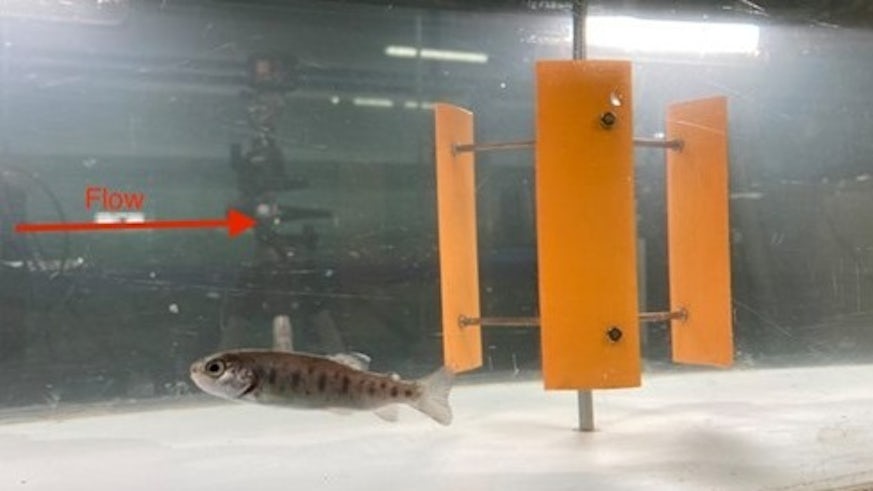PhD Insights: Monitoring the behaviour and hydrodynamics of fish at migration barriers
8 March 2021

PhD student Guglielmo Sonnino Sorisio monitors fish behaviour and hydrodynamics at migratory barriers to restore river connectivity.
River connectivity has suffered greatly as a result of man-made obstructions. Man-made constructions impede the up and downstream migration of fish that is vital for diadromous species travelling to and from the sea to complete their reproductive cycle. Since the 1970s, there has been a rapid decline in European eel (Anguilla anguilla) populations and this fish is now classified as a critically endangered species. One of the main causes for this decline are the migration barriers in the river systems of Europe.
Finding solutions to these barriers requires to use an interdisciplinary approach that combines engineering techniques and expertise from biosciences. This provides a better understanding of the dynamics that govern fish passage and migration past obstructions and the deeper hydrodynamic principles of anguilliform swimming performance.
'I believe that using an interdisciplinary approach will help restore connectivity and advance our knowledge of fish swimming dynamics.'
As part of his research, Guglielmo Sonnino Sorisio, PhD student in the School of Engineering co-supervised by Prof Jo Cable and Dr Catherine Wilson, is looking to restore connectivity and advance existing knowledge of fish swimming dynamics.
Through experiments, Guglielmo studies the effects of different types of screens and flow conditions on fish, such as velocity and turbulence. Working with PhD student Stephanie Muller, Guglielmo has recently been looking at finding passage solutions around turbines for rainbow trout. Together, they investigated the effect of blade colour on the behaviour of trout in the vicinity of the turbine.
Gugliemo is also working with the Environment Agency who spearheads the regulations and advancement of better fish passage technologies and provides crucial insight and decades of real-life experience to the project.
Find out more about Guglielmo's work on the FRESH CDT website or contact him directly at SonninoSorisioG@cardiff.ac.uk.
Share this story
For more information, visit the Water Research Institute website.


